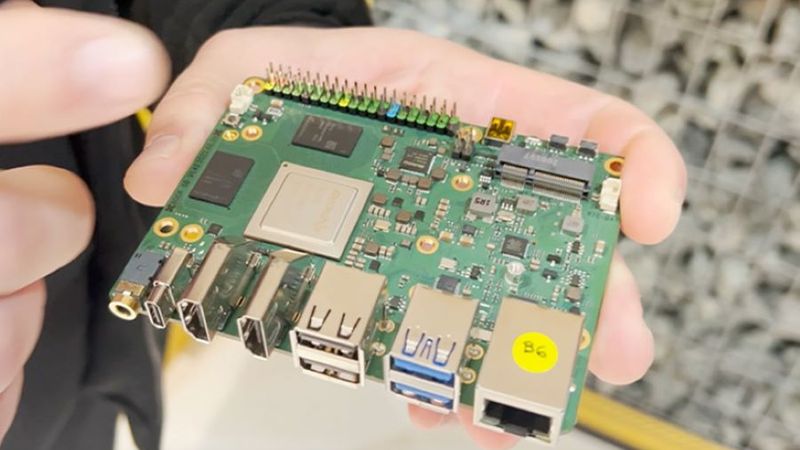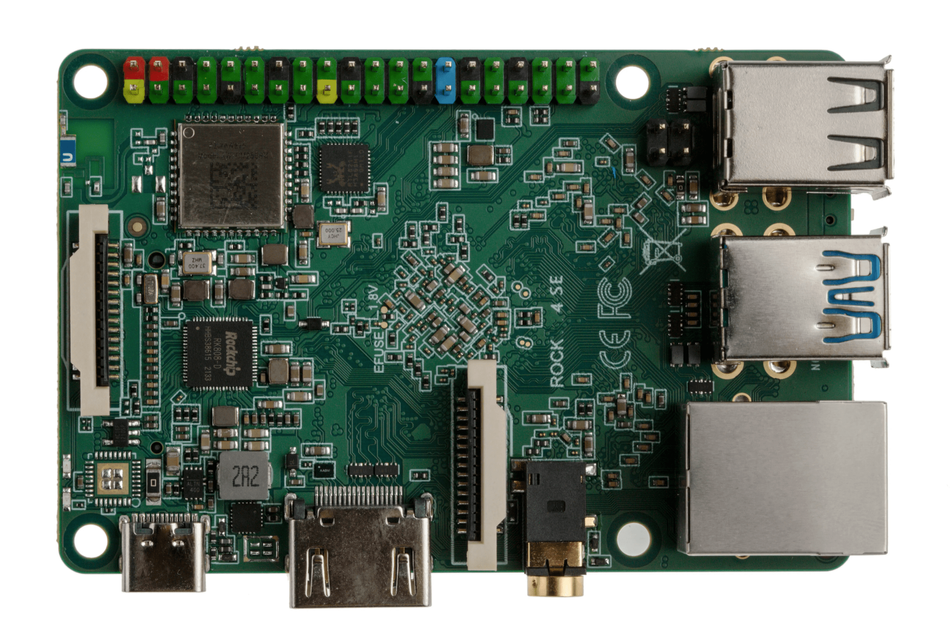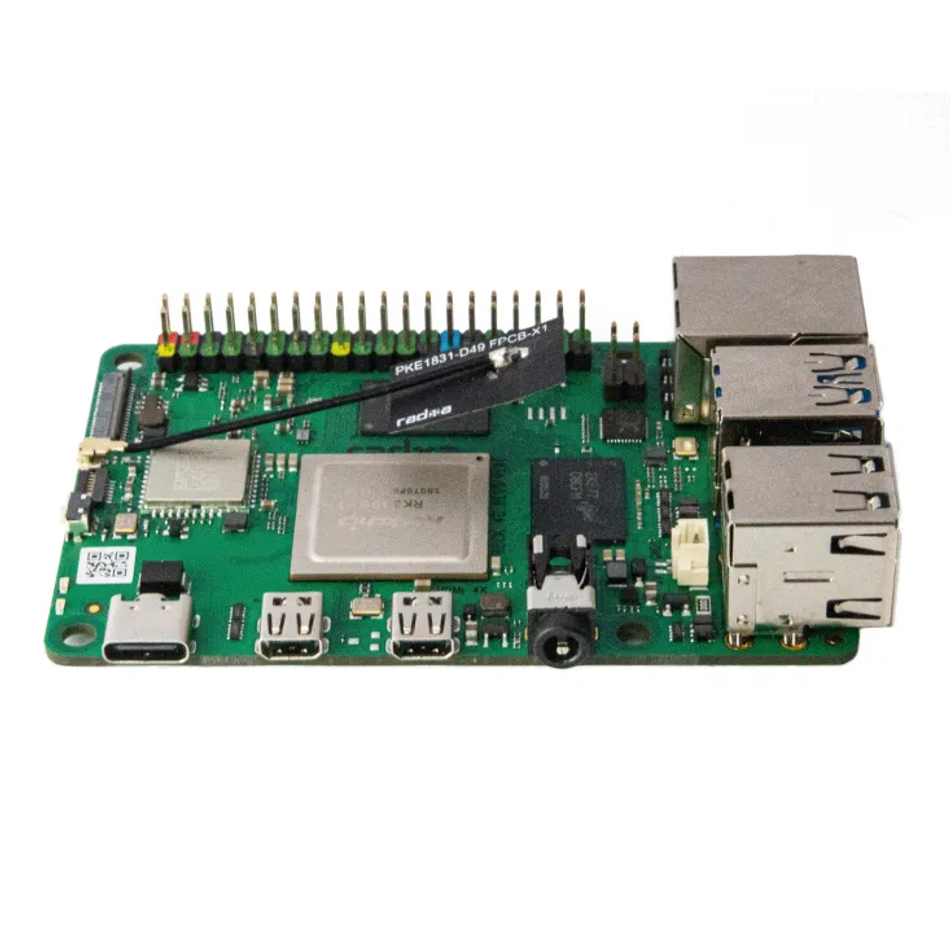SBCs for Modern Engineering
An investigation into innovative applications of SBCs

Image credit: Ian Buckley
Single Board Computers (SBCs) have emerged as transformative components driving innovation in various fields. Leveraging their flexibility and computational capacity, SBCs have become integral to robotics, Internet of Things (IoT), and engineering advancements. From enabling autonomous drones to orchestrating smart home automation systems, SBCs are reshaping industries and propelling us towards a more interconnected and efficient future.
This article delves into the potential of SBCs in modern engineering, highlighting their technical impact and some applications.
Innovative applications in robotics
SBCs have established themselves as central components in robotics due to their adaptability and technical power. From drones to highly complex industrial robots, SBCs have played a leading role in critical tasks such as navigation, data processing, and control.
An example is the drone field, where SBCs have started a technical revolution. These devices are responsible for real-time data processing, running advanced control algorithms, and managing the vehicle's stability. Moreover, they control functions such as camera adjustment and video transmission, highlighting the ability of SBCs to handle complex algorithms necessary for drone autonomy.
SBC-based drones for crop monitoring
Drones have become popular in the agricultural sector for monitoring crop health, which can improve farm production and efficiency, leading to better crop management and observation. In drones, an appropriate processing unit is required, and an SBC such as the ROCK 4 SE, developed by OKdo in collaboration with Radxa, is an option for this application. ROCK 4 SE is a robust and versatile SBC featuring a high-performance Hexa-core Rockchip RK3399-T processor and 4GB 64bit LPDDR4 RAM. Furthermore, it is equipped with a Dual Arm Cortex-A72 CPU, Quad-core Cortex A53, and Arm Mali T860MP4 GPU. Therefore, it gives this SBC advantages, such as running parallel applications like imaging algorithms, navigation software, and communication protocols.
ROCK 4 SE offers ample storage capacity, thanks to a Micro SD card, an eMMC, and an M.2 (M key). Therefore, it is possible to manage image acquisition data storage without concerns about memory. For connectivity, it offers two SPI/I2C buses, two UARTs, four USBs, an 802.11 Wi-Fi connection, and Bluetooth 5.0.
Beyond the SBC, the drone for this application has other essential devices:
- A frame, like the Tarot FY690S Hexacopte, connects all the components.
- Motors like the Readytosky 920KV for the drone to fly.
- Electronic speed controllers such as 40A OPTO 2-6S.
- A battery supplying the drone's electronic systems, such as the Turnigy Graphene Panther 3000mAh 4S 75C.
- Flight controller, for example, Pixhawk PX4, controlling movement and stability.
- Propellers attached to the motors allow the drone to fly.
- GPS module such as the BN-180 GLONASS NAZE32 provide location data and will enable the drone to fly autonomously.
Finally, crop images can be captured using the AMG8833 IR thermal camera, which provides images with temperature measurement data from 0°C to 80°C and uses I2C for communication. The ROCK 4 SE controls the Image acquisition, creating the database that relates the image data to the drone's current position obtained from the GPS module. Therefore, using this system, reducing costs with drones to monitor crops and still have a powerful and versatile system would be possible.
SBCs for IoT applications
In the ever-expanding landscape of Internet of Things (IoT) devices, SBCs play a prominent role. The interconnected nature of IoT requires sophisticated development platforms, and SBCs fill this role masterfully. Equipped with networking features such as Wi-Fi and Bluetooth, SBCs emerge as the natural choice for managing multiple IoT devices, becoming a solid foundation for smart home automation systems, industrial monitoring, and environmental control.
SBCs often operate as control centers in smart homes, ensuring fluid communication with various IoT devices. They execute commands, collect and analyze data, and apply predetermined algorithms for decision-making. In industrial applications, SBCs enable real-time monitoring and control of critical equipment, substantially increasing operational efficiency.
Building smart homes with SBCs
Using SBCs, such as the ROCK series, it is possible to develop innovative home automation solutions connected to and powered by a compact, low-cost, easy-to-use yet powerful device and providing high levels of customization. One option for SBCs for smart home projects is the ROCK 4 C+.
The ROCK 4 C+ is a robust, high-performance multifunction board based on the powerful Rockchip RK3399-T SoC. t has a Dual Arm Cortex A72, Quad Arm Cortex A53 CPU, and an Arm Mali T860MP4 GPU and is compatible with a wide range of software operating systems, such as Android and Linux. Furthermore, this SBC can perform safe shutdowns at the touch of a button without the risk of corrupting storage due to the integrated on/off button.
This SBC supports a variety of connections, such as:
- USB and Ethernet ports
- HDMI and audio outputs
- eMMC, microSD card, and M.2 SSD connectors for storage
- Wi-Fi and Bluetooth
- General purpose input/outputs (GPIO), like 2 x UART, 2 x I2C bus, 1 x PWM, 1 x ADC, 6 x GPIO, 2 x 5V DC power in, 2 x 3.3V power pin.
Different devices can be integrated into a smart home, such as lights, temperature sensors, humidity sensors, and even intelligent water leak detection. Depending on the device controlled, expansion modules may be required, which could include:
- Relay modules to control and switch water pumps, lights, ventilators, and water heaters.
- Sensor modules provide information such as water level, temperature, and pressure.
- Digital inputs/outputs to monitor switches and button states or control lights, windows, and doors.
- Analog inputs/outputs to receive or transmit information from sensors.
- Communication modules to interface and exchange information with devices such as energy meters, inverters, and battery charger controllers.
Therefore, typical smart home applications are heating, cooling, power, lighting, water, and pumping. It is possible using SBCs to integrate and automate these systems, making management easier and remotely operable.
One option to start developing a small smart home automation project is to use the OKdo ROCK 4 Model C+ 4GB Single Board Computer Starter Kit. The kit includes a ROCK SBC, PSU, Case, Preloaded Linux OS, Heat Sink, and Fan. With this kit, the Linux operating system comes preloaded on a 32 GB micro SD card, CPU heatsink, and fan to improve thermal management. In addition, the case offers robust protection for the board.
Conclusion
SBCs occupy a fundamental place in the advancement of modern engineering, crossing boundaries and generating significant technical innovations. Their performance in robotics, IoT, data collection, smart homes, and processing highlights their relevance. The intrinsic versatility and power of SBCs ensure that these devices are present in technological innovations, shaping the future of engineering with precision and innovation. The ROCK series, such as ROCK 4 SE and ROCK 4 C+, offer examples of how low-cost, powerful SBCs can be used in innovative engineering projects.
References
- New-Tech Magazine Group Ltd. 2022. “Enabling Smart Robotics with Single-Board Computing”
- DFRobot, 2023. “Single Board Computer (SBC) for Robotics”
- OKdo. “Connected Smart Building Solutions”
- Cassiano Ferro Moraes, 2023. “Precision Agriculture with SBCs: Exploring the Benefits and Applications on Machinery”
- OKdo. “Tiny Home Automation & Smart Home Technology Solutions”
- Cassiano Ferro Moraes, 2023. “How SBCs can turn vans and tiny houses into smart homes”


